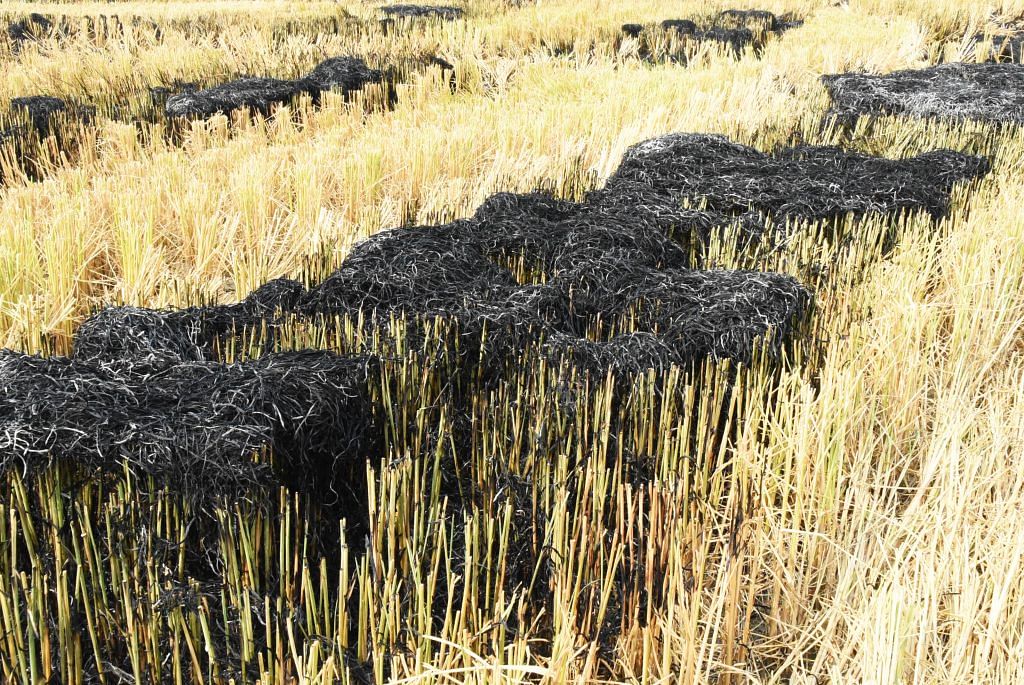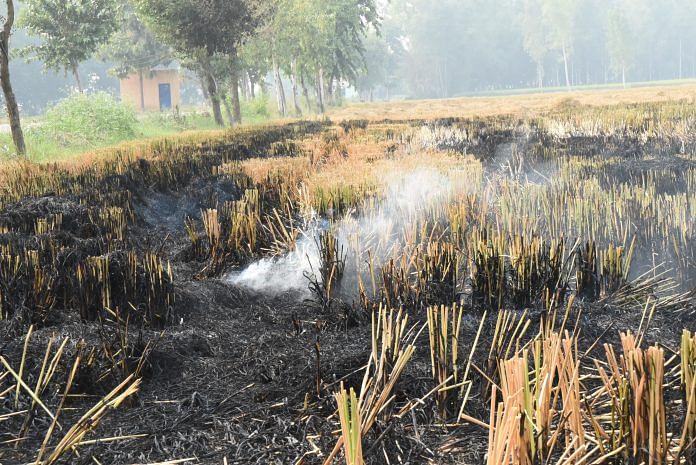Haryana government says it is trying various options to curb stubble burning, but 672 cases had been registered till two days before Diwali.
Kaithal/Kurukshetra: With an eye on the pollution levels in the National Capital Region around Diwali, the National Green Tribunal had banned stubble burning in neighbouring states in 2015. However, the fields of Haryana continue to burn, despite the Haryana government’s efforts to curb the practice.
Haryana is home to 10 paddy-growing districts, of which Karnal and Kurukshetra have recorded the maximum number of stubble burning cases this season – 274 and 181 respectively. The total number of cases recorded as of 17 October – two days before Diwali – was 672, and the government has collected Rs 6.87 lakh in environmental compensation.
This amount, the government says, is to be used for the promotion of environment-friendly activities in the region, and it’s trying various options.
Steps being taken
Dheera Khandelwal, additional chief secretary of the state’s environment department, and chairperson of the Haryana Pollution Control Board, told ThePrint: “We have conducted almost 3,000 awareness camps in various districts, and the farmers have been very responsive. This year there have been fewer cases of burning compared to the 1,797 recorded in 2016.”
In addition, nature camps are being organised by the Haryana forest department to educate the farmers about the risks faced by the environment. The government has announced a cash prize of Rs 50,000 for every panchayat that does not burn stubble this season.
The Haryana renewable energy department (HAREDA) is launching biomass-related schemes, and exploring possibilities of using crop stubble in brick kilns. The department of agriculture has provided nine kinds of stubble management equipment on subsidy.
However, farmers across villages like Cheeka (Kaithal) and Pratapgarh (Kurukshetra) do not own any of these machines, as they are not affordable. They told ThePrint that only private buyers bring their machines to the villages during the harvest season, and demand Rs 1,500 for clearing one acre of paddy straw. These private buyers, who later take the straw to cardboard mils in Rajasthan, visit the village only if there is a large amount of straw. When these private buyers delay their arrival, farmers decide to burn the straw, as they have to prepare the land for the next sowing.
Khandelwal said: “As a next step, we are planning to involve primary agriculture co-operative societies, to make stubble management machinery more available to the farmers.”

Challenges for farmers
When wheat is harvested in March, there isn’t as much stubble burning, because most of the straw is consumed as animal fodder, according to Khandelwal. However, paddy straw is a different matter altogether, because it is not suitable for all ruminants. This is because of its high silica content (30-40 per cent). Cows do consume paddy straw, but there are just 18 lakh cows in the state, compared to 61 lakh buffaloes who do not consume it.
The state, therefore, wants to promote goat rearing in the future, to increase the use of paddy straw as fodder.
This, however, is not the only reason for the farmers’ inability to adhere to the ban on stubble burning.
Simranjeet Singh, a farmer from Kaithal, said: “When we sow paddy after wheat, the field has to be irrigated with excess water, so the stubble gets decomposed quickly. But when we have to prepare the fields for wheat, the fields have to be bone dry. This is why farmers see burning the stubble as an easier option.”
Yet, farmers in Ramgarh, Kurukshetra, have restrained from burning their crop this season, after cases were filed in the previous season and farmers were threatened with a shutdown of subsidies.
The bottom line remains that stubble burning is still continuing, and will do so, unless tougher measures are taken to fall in line with the NGT’s order.
Read more: Few takers for Punjab govt’s ‘best’ solution to stubble burning.



